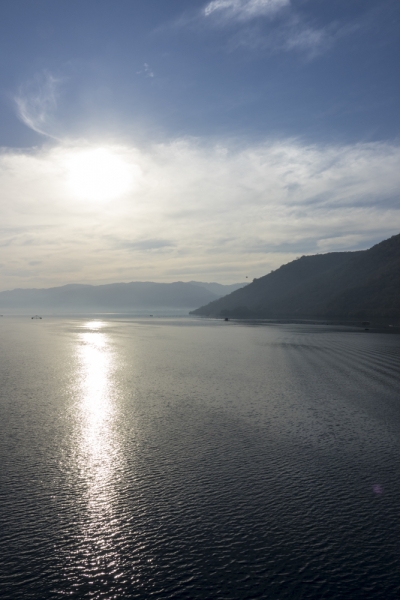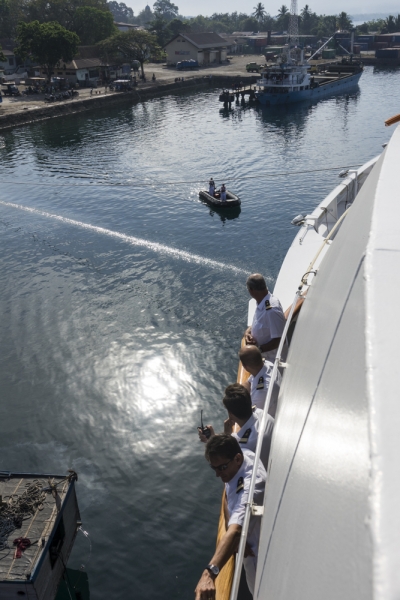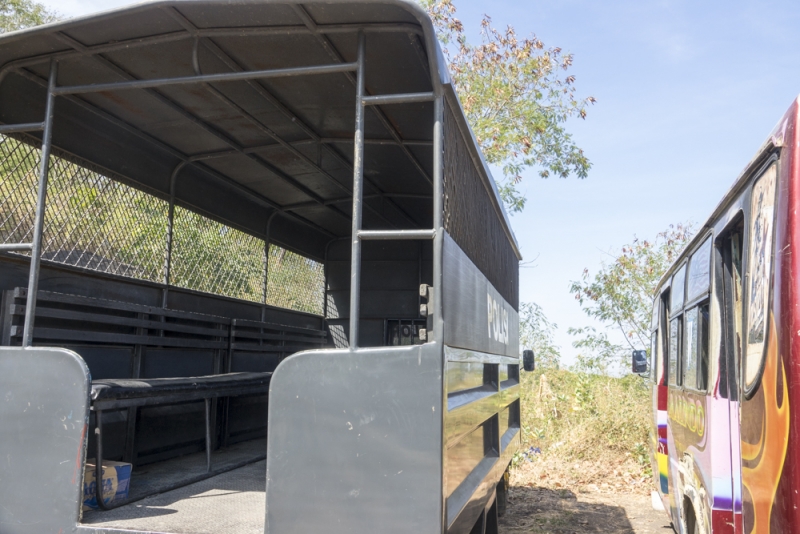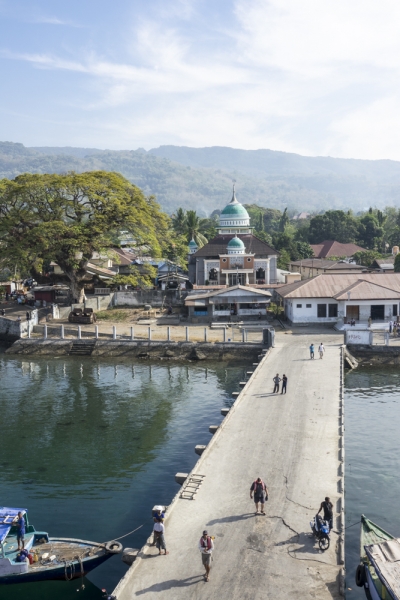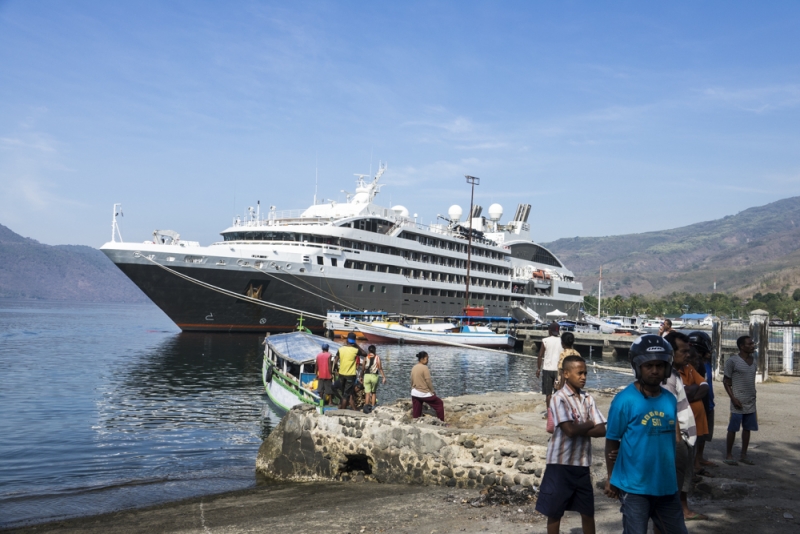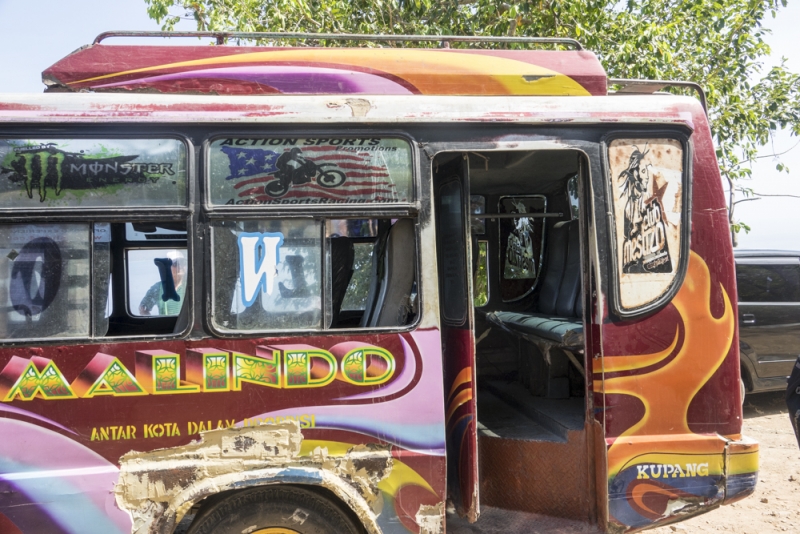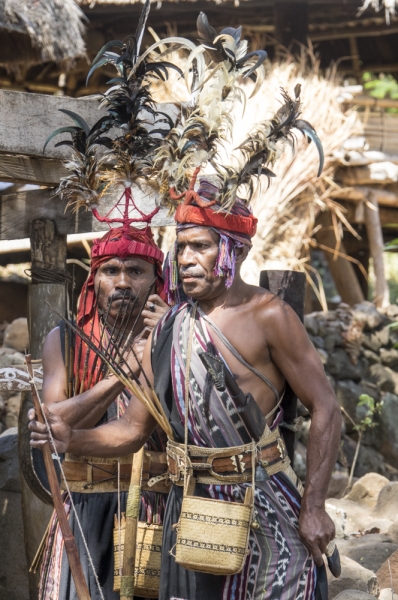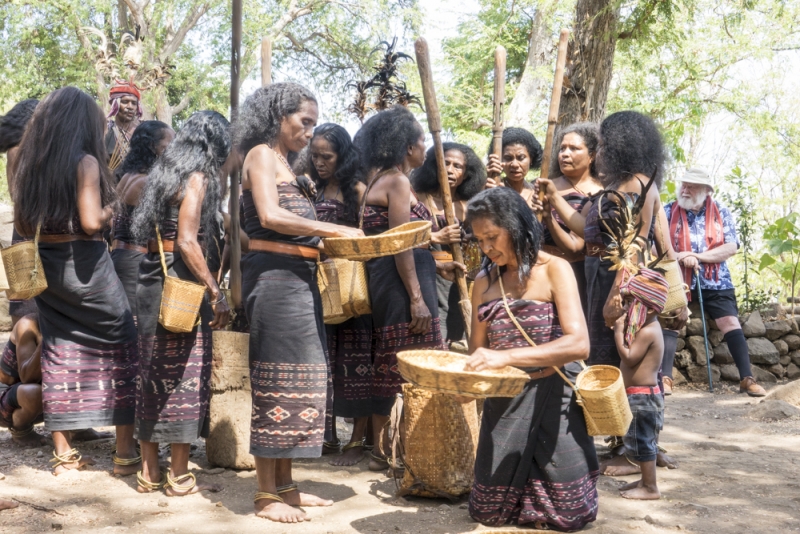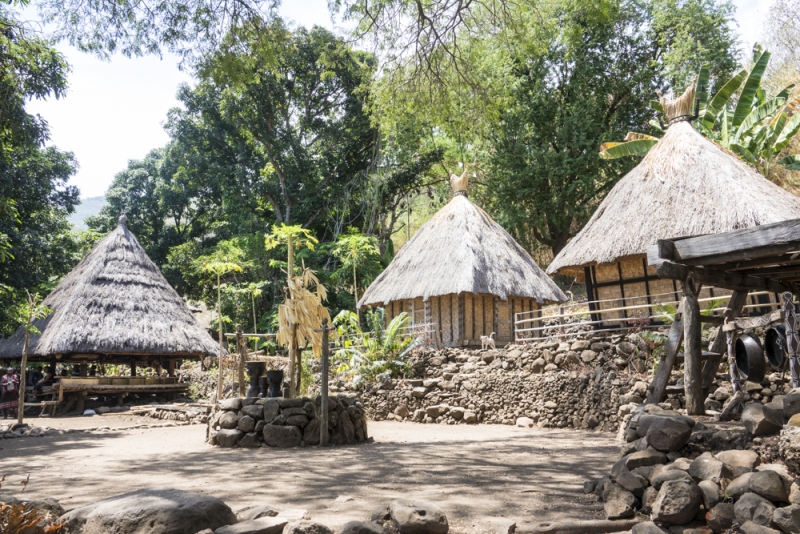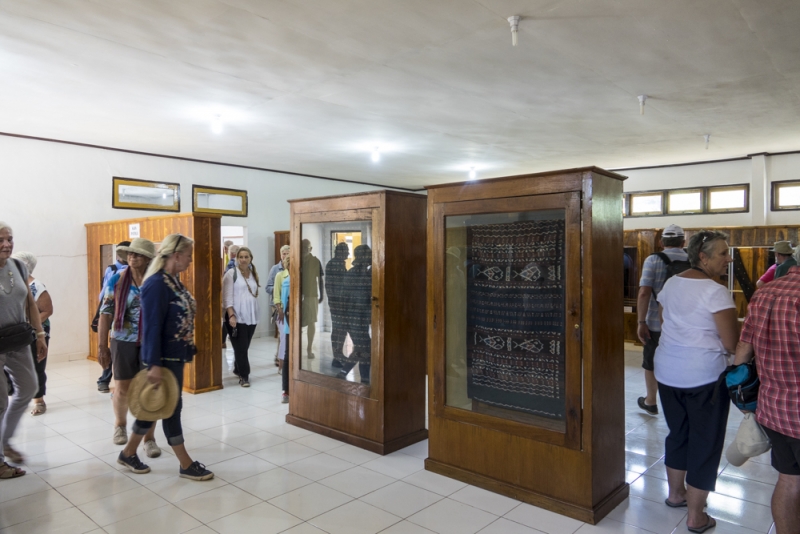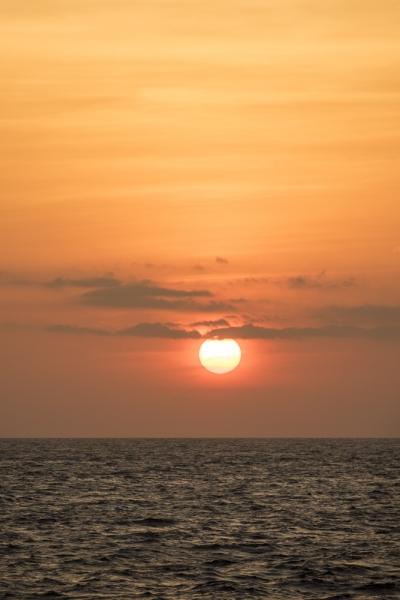Kalabahi is a complete contrast to Ambon. The capital of the district of Alor, Kalabahi is located in the bay of Teluk Mutiara, surrounded by hills and mountains. L’Austral is able to berth at a pier this morning for a dry landing. At least it would be if there wasn’t an empty cargo ship occupying our spot. All is quite for a while as we wait for signs of life, until Captain Marchesseau wakes up the town and all of the surrounding valleys with a blast of the ship’s horn.
Some places that you visit have a different feel to them – Kalabahi is immediately likeable, even if we are packed into a convoy of decrepit buses and mini-buses, and a spare army truck. We’re off to see a traditional village, market and museum. It is no more than 30 minutes on the buses, but as soon as we arrive at the village, a passenger promptly faints, and later on another has to lie down for the duration of the visit and the journey to the market and museum.
The village of Takpala is certainly the highlight. An extensive performance of traditional singing and dance is given, followed by a mini market where the local women are selling their handcrafted fabrics and trinkets.
This market would have been more than sufficient, but we are now off to a ‘traditional Indonesian market’, which unfortunately turns out to be a typical food, fish and Western clothing market, much as you find anywhere in the world. Thankfully it is only a 20 minute stop, and then it is off to the museum.
Made up of three buildings, the museum focuses on hand-woven traditional fabrics in one building, and artefacts including chinaware, weapons, and musical instruments in the others. It is a small museum, and easily seen in 30 minutes.
There has been much moaning about the heat and the state of the buses today (I couldn’t fit my knees behind the seat), but I’ve preferred this visit to Kalabahi much more than the air-conditioned 3 hours on a bus for the Ambon trip.
Our next destination is Pink Beach tomorrow afternoon, and in the meantime there is another great sunset.

